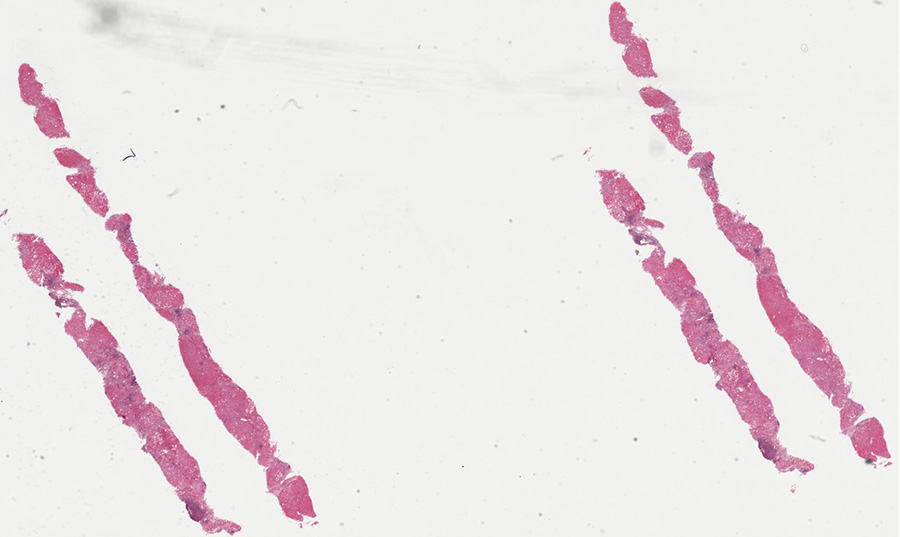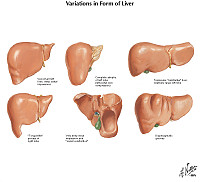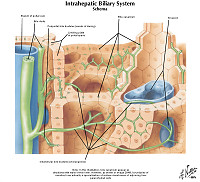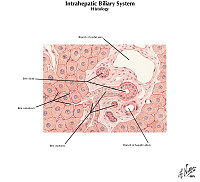CASE NUMBER 521, part 2
Clinical History (continued):
Laboratory analysis shows:
AST: 226 ALT: 287 Alk Phos: 170 T. Bili: 4 Albumin: 2.5
WBC: 7 Hb: 14 HCT: 42 Platelets: 100,000
Hepatitis A Ab: Negative
HBsAg: positive
HBeAg: positive
IgM anti-HBc: positive
Anti-HBs: negative
Hepatitis C PCR: Negative
HIV: Negative
After laboratory assessment, a percutaneous needle biopsy of the liver is performed. A virtual slide and microscopic images from the biopsied material are provided below.
Slide (UMich_30760nl): [DigitalScope]
Image Gallery:
Review Liver Histology
Slide 3: Liver
[DigitalScope]
The liver is the organ that metabolizes nutrients received from the digestive tract. These nutrients and processed by tissue hepatocytes which are large polygonal cells. The hepatocyes are separated by portal triads. The triads consist of an artery, a vein and a bile duct. The bile duct is lined by cuboidal epithelium. The artery has a muscular wall and a flat endothelial lining. The sinuses are well defined and contain a small amount of blood.
|
|
Summary of Microscopic Findings
The biopsy demonstrates mild portal and interface hepatitis. The inflammatory infiltrate is compose predominantly of small lymphocytes and scattered plasma cells. No significant interlobular bile duct injury of vascular abnormality is seen. The lobular parenchyma contains small lymphoid aggregates, a rare acidophil body and scattered hepatocellular intracytoplasmic ground glass inclusions. There is only minimal macrovesicular steatosis (less than 5%) and no pigment accumulation.
|
|
VM image questions:
- Describe the microscopy. Is the inflammation confined to the portal area?
- Take a screenshot and annotate: portal inflammation and steatosis.
- Which type of inflammation is present?
521-3. What is the correct diagnosis?
--ANSWER--
Clinical history, part 3 (click here to open)
|
















